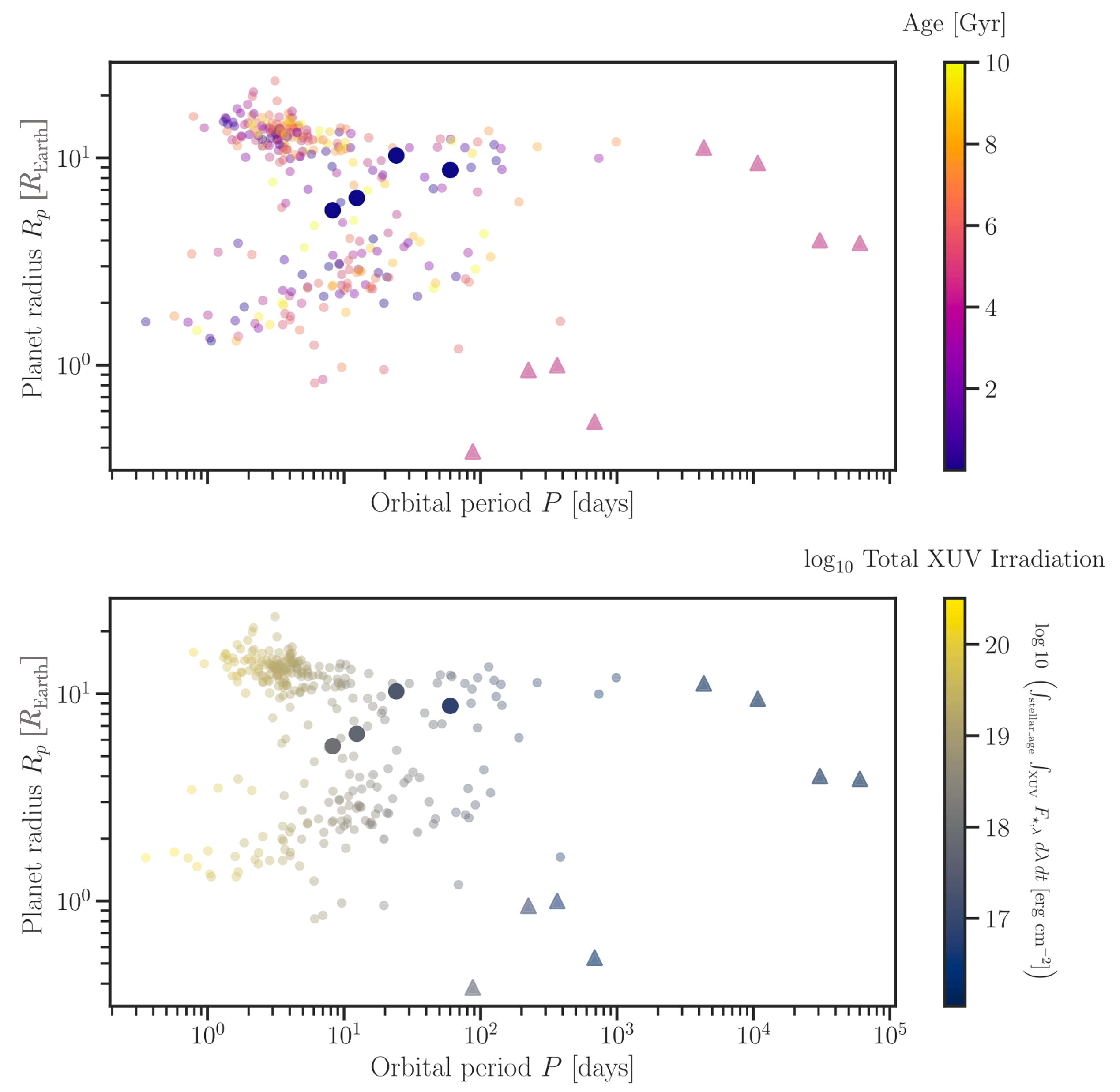NICER / ISS Science Nugget
for November 2, 2023
The Fates of Irradiated Atmospheres
Whether a planet is hospitable to life depends crucially on its ability to hold on to an atmosphere across the eons needed for the formation and evolution of life. Loss of a gaseous atmosphere may be due to heat generated within a newly-formed planet or, especially in cases where a planet orbits close to its host star, external heating and evaporation due to radiation. Models suggest that atmospheric escape should take place within the first billion years of a planet's existence, during which time the properties of the young host star will also evolve considerably. Assessing the accuracy of such models and understanding whether the early environments of planets beyond our solar system are friendly to life require measurements of the total irradiation of a planet across time in ultraviolet (UV) and X-ray light, especially for stars with mass similar to that of our Sun and for a range of ages. Such measurements are being supplemented by the emerging capability of directly investigating atmospheres as we observe the planets passing in front of their host stars and absorbing some of the received light, with optical and infrared spectroscopy revealing atmospheric temperatures and chemical abundances.
At a distance of approximately 350 lightyears, the star V1298 in the Taurus constellation offers an exciting opportunity to test models of atmosphere retention: its mass is comparable to our Sun's (1.1x) but it is estimated to be just 23 million years old (compared to our solar system's 4.5 billion years). V1298 also hosts four known planets with close-in orbits in a plane that coincides with our sightline, so that these are "transiting exoplanets," and the star's brightness makes them excellent candidates for future direct characterization of their backlit atmospheres. NICER observations of V1298 were conducted in 2020 as part of our General Observer program's Cycle 2; this X-ray dataset was recently combined with UV data from the Hubble Space Telescope by a team led by G. Duvvuri (Univ. of Colorado) and published in The Astronomical Journal. The team derived the current broad-band X+UV radiation spectrum received by the planets orbiting V1298 Tau, and used models to estimate their cumulative irradiation over V1298 Tau's lifetime. They then extrapolated these findings to dozens of other known exoplanets around stars of similar mass but a wide range of ages. Much work remains to be done, and NICER measurements are poised to contribute essential input to models of atmosphere retention and habitability of a wide variety of planetary systems.

Radii and orbital periods of known exoplanets orbiting stars with mass similar to V1298 Tau (translucent circles), those orbiting V1298 Tau itself (opaque circles), and the planets of our solar system (triangles). In the upper panel, symbols are colored according to the estimated age of the host star in billions of years (vertical bar at right); in the lower panel, color represents the cumulative X+UV irradiation received by the planet. (Figure adapted from Divvuri et al. 2023)
<< Previous
Main Index
Next >>